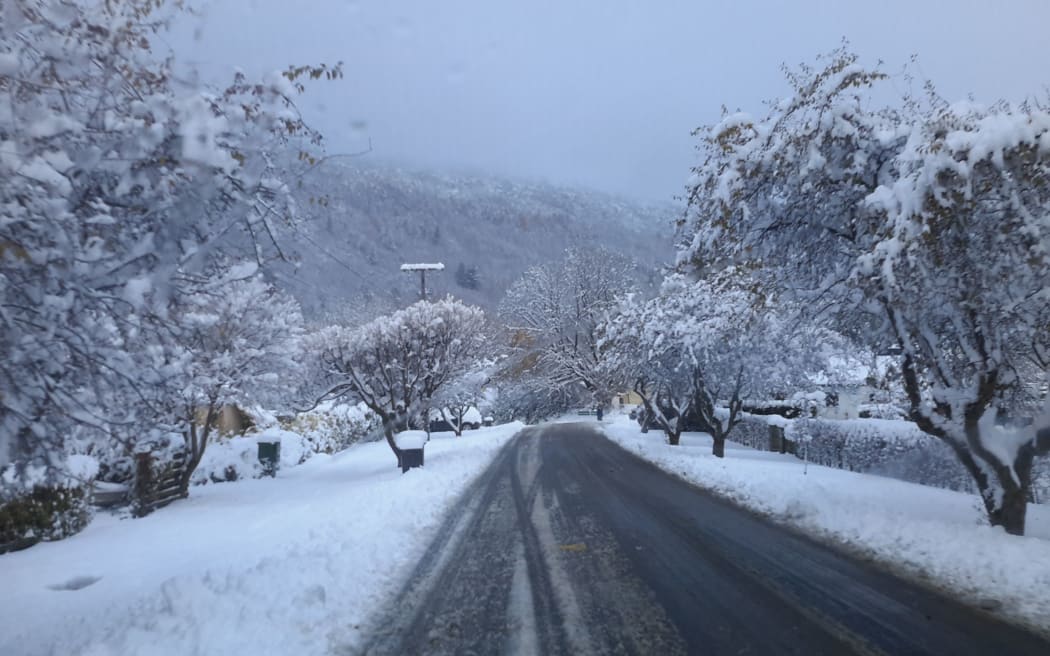A cold blast is expected to sweep the South Island this morning bringing snow and severe gales to parts of Otago and Canterbury.

Photo: SUPPLIED
The storm could bring down powerlines, damage trees and cause widespread road closures.
A severe weather warning is in place for most parts of the lower South Island this morning, with half a metre of rain forecast for the West Coast while South Canterbury could receive up to 30 centimetres of snow.
Severe gales of up to 130 kilometres an hour are expected for parts of inland Canterbury.
MetService meteorologist Peter Little said few places in the South Island would escape the cold snap and more than a metre of snow could accumulate at high altitudes.
"It's a real mixture of rain, wind and gales so a proper winter storm."
He said the amount of snow forecast could cause "a lot of disruption to transport".
"Also with the snow being quite a wet snow, it has the potential to damage trees and maybe even bring down powerlines," he said.
Mr Little said because the cold weather would continue for several days, the snow may take a while to melt which could delay the response time of maintenance crews.
Snow
Cold air is expected to combine with rain in Canterbury, Otago and Southland to bring "significant amounts of heavy snow" down to low levels.
Parts of Otago and South Canterbury are likely to be the hardest hit, with accumulations reaching 20 to 30cm at 200 metres and a metre or more above about 700m.
Gales and Heavy Rain
The MetService said gusts of up to 130 kilometres an hour near the Canterbury Foothills could cause damage to trees and unsecured structures and could make driving hazardous.
Heavy rain in Fiordland will spread into Westland this morning and will continue into tomorrow morning.
During this time 300 to 500 millimetres of rain could fall about the ranges, although this would be heavy snow at high altitudes.
The heavy rain is likely to lead to surface flooding, slips, and rapidly rising streams and rivers.

